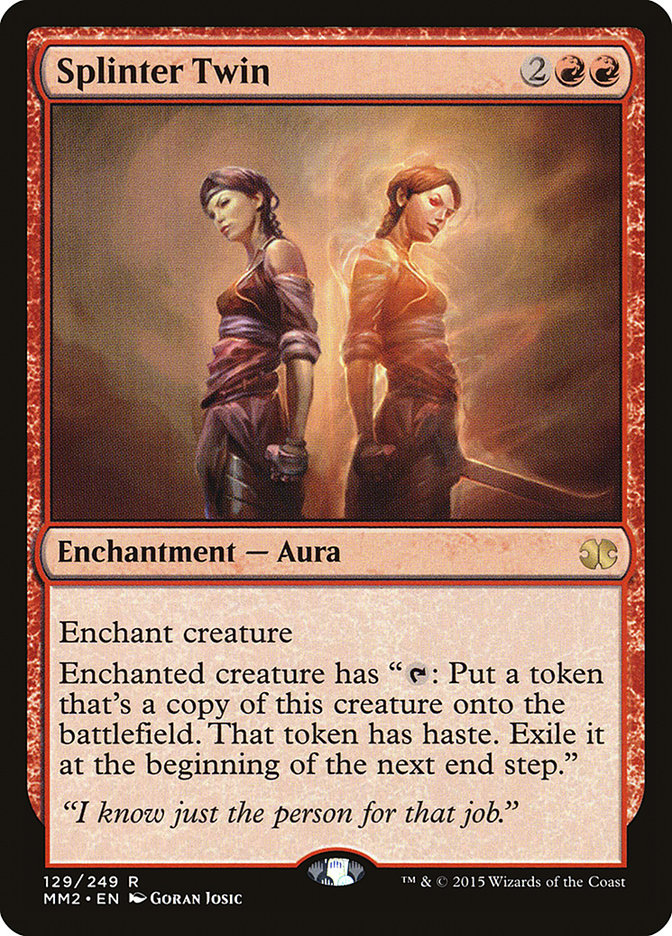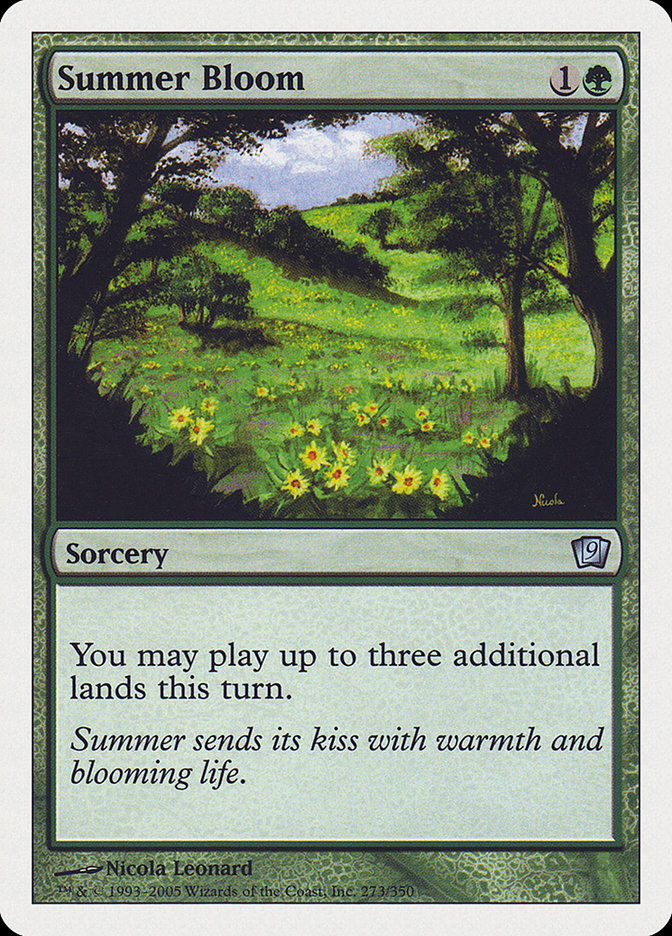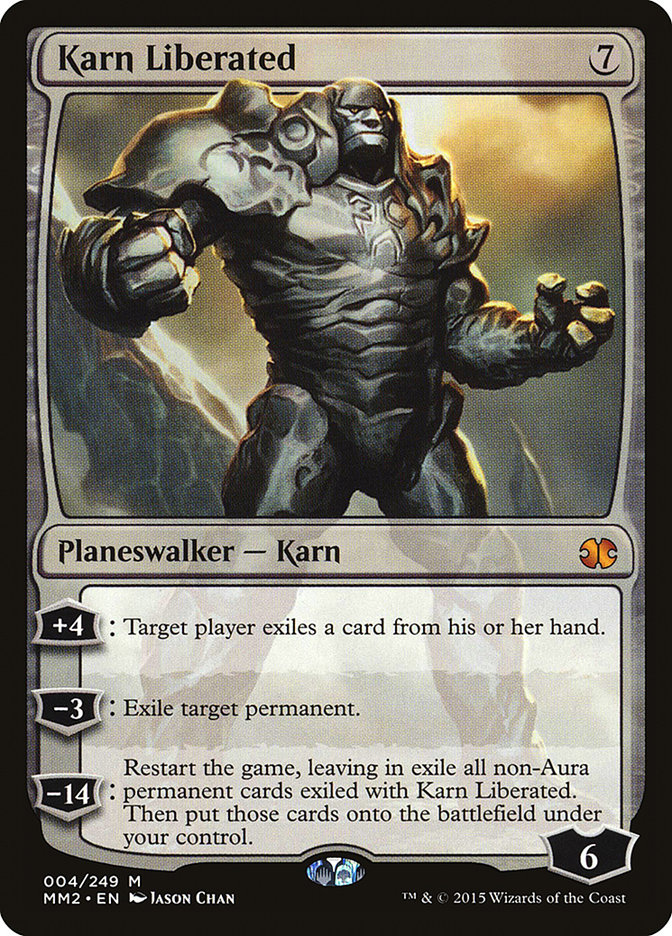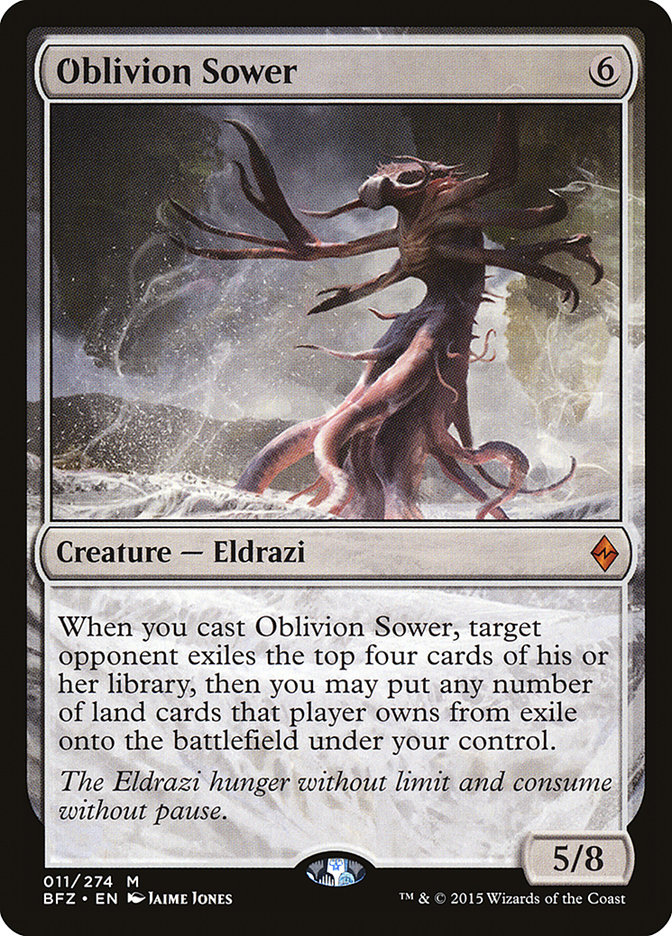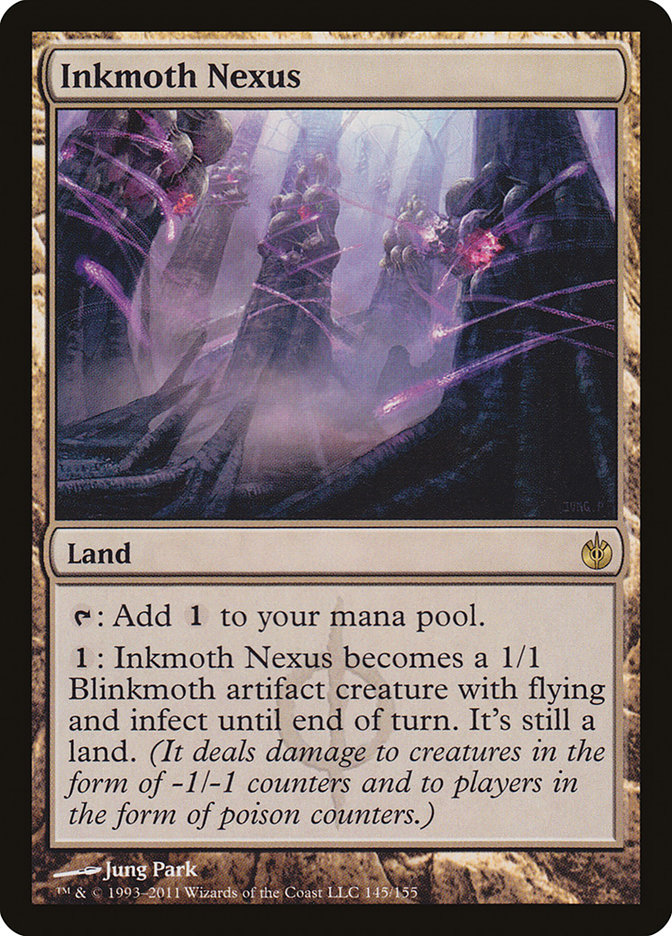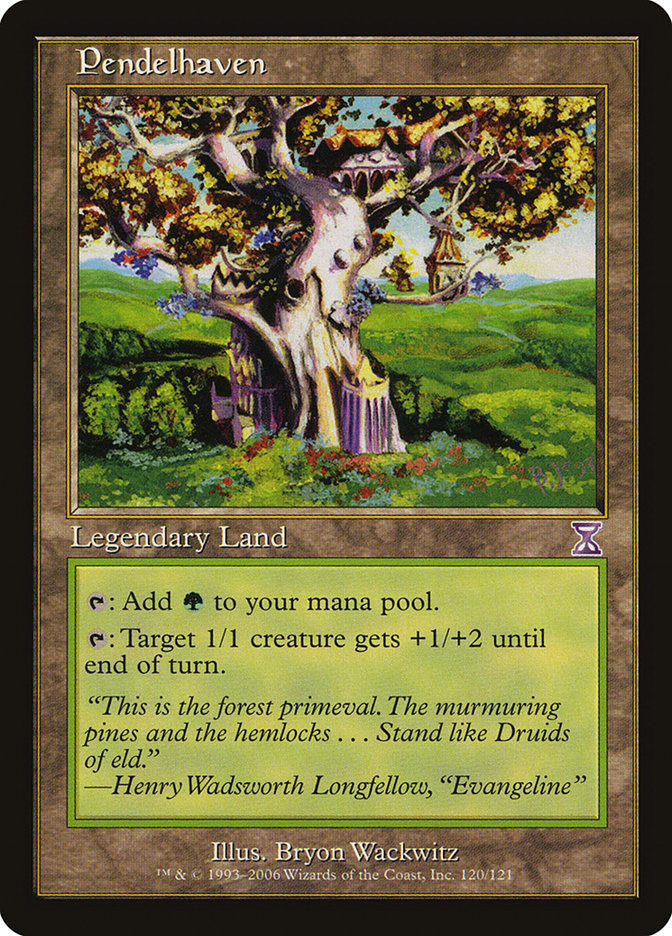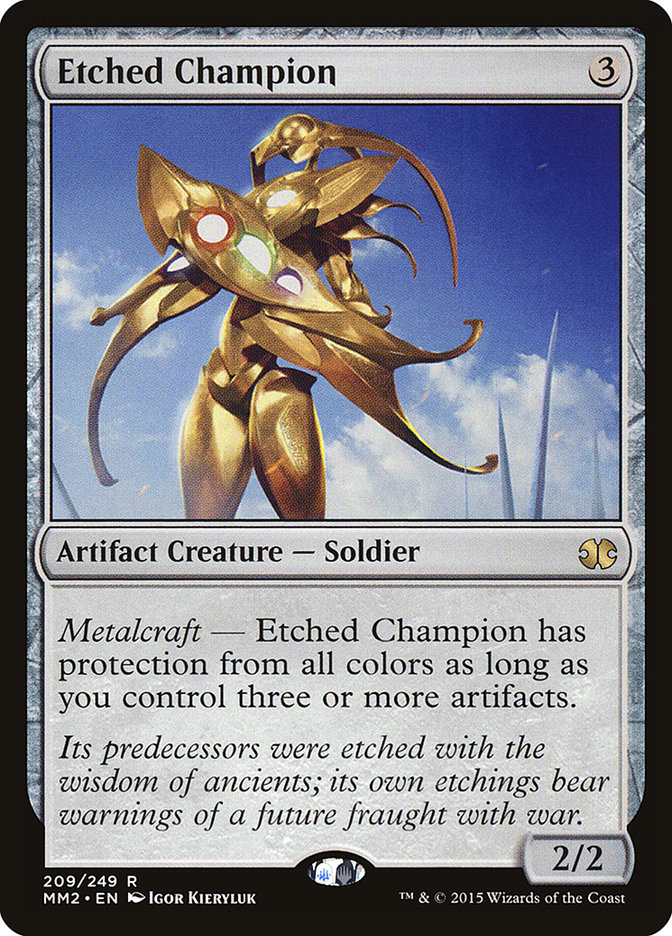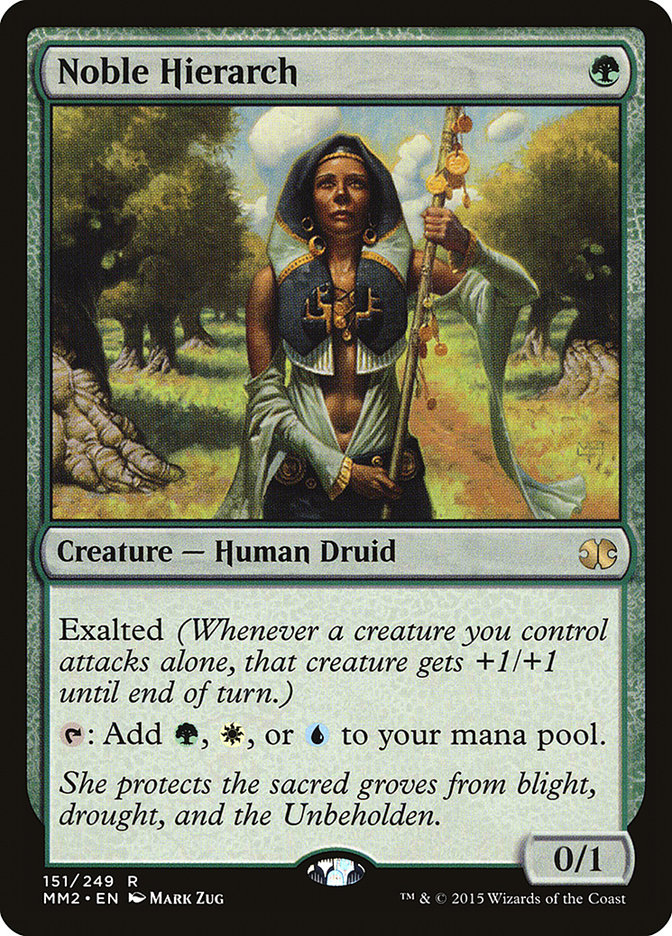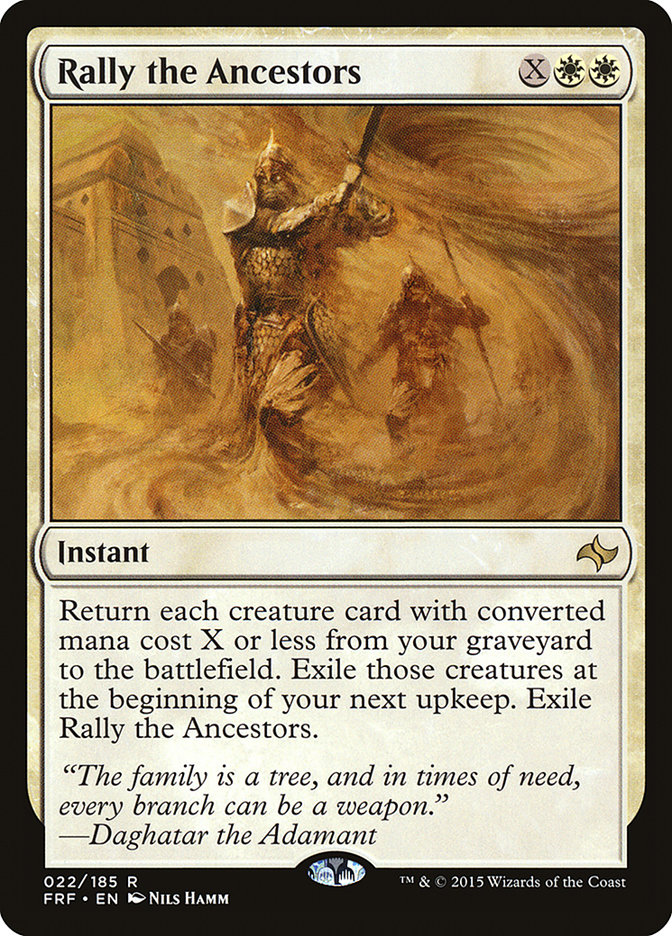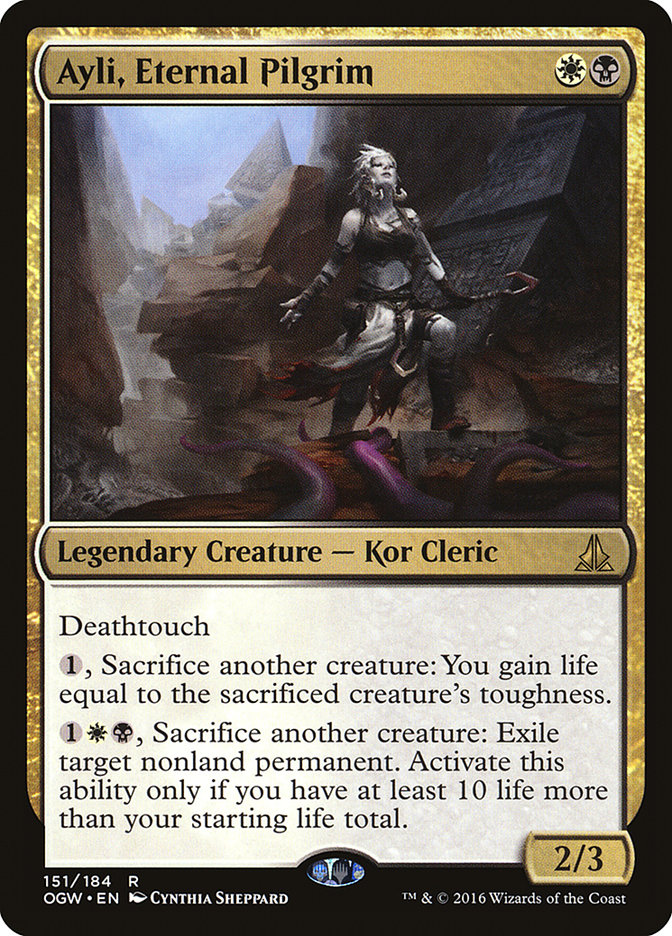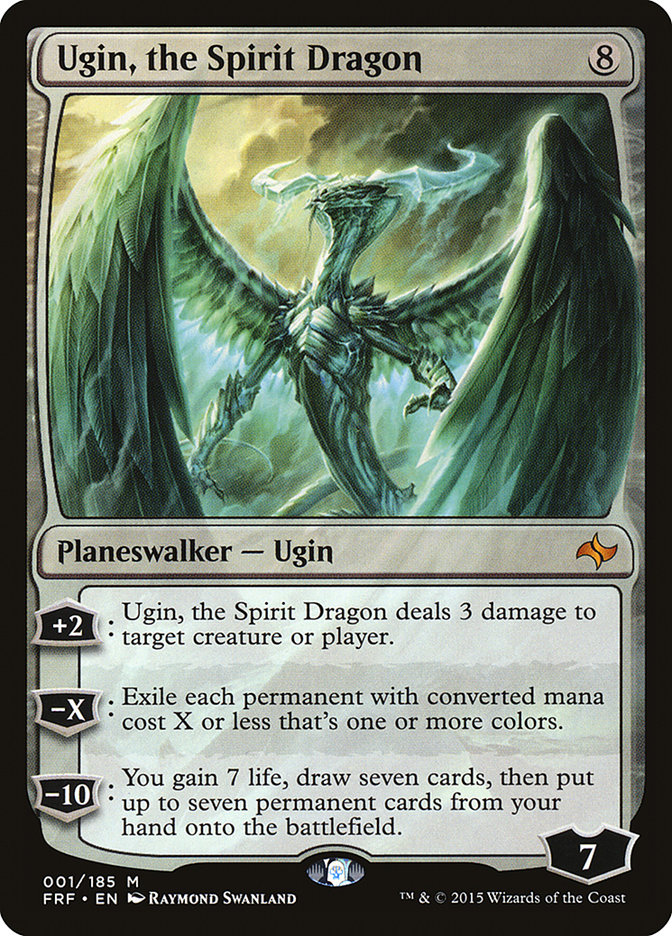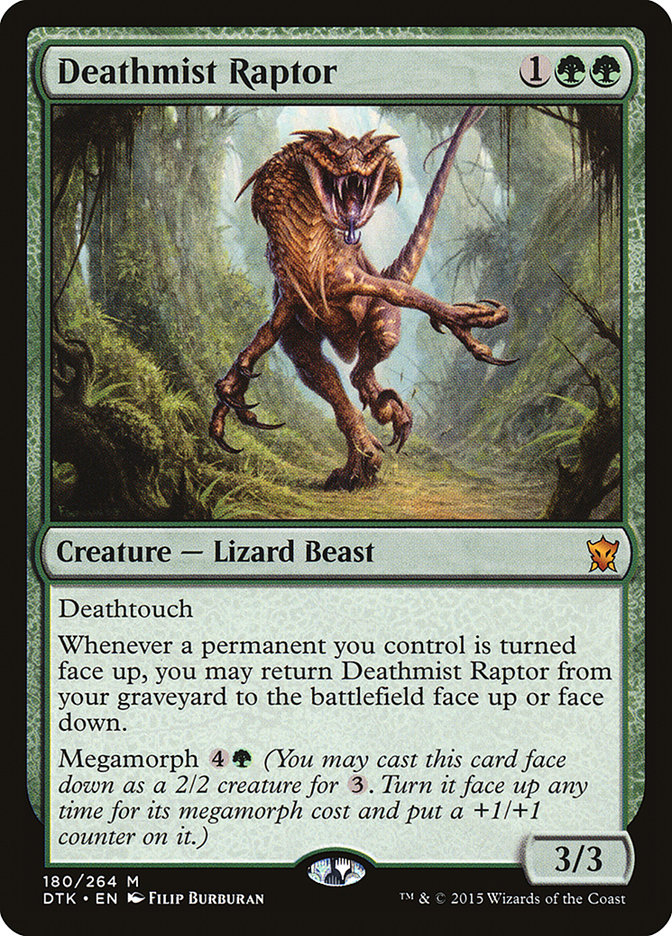[Editor’s Note: Michael Majors and Ross Merriam may have a Pro Tour on their hands, but that doesn’t mean they can sit back and not debate the week that was in competitive Magic! See whether they think the following statements are fact or fiction, then vote on who you felt debated it best!]
1.) The results of #SCGCOL’s Modern Classic were incredibly diverse. #SCGRegionals and #PTOGW are going to be a better events now that Splinter Twin and Summer Bloom are gone.
Michael Majors – Fiction.
Right after the Banned and Restricted announcement, I was bemoaning the fact that all of my pet decks were poor prospects for #PTOGW. My love affair with Grixis is well-documented, and I have faced fewer Savage Beatings than the one our newest SCG Tour® champion Jacob Baugh handed me in Cincinnati with Mono-Black Eldrazi. If this weekend I was simply Karn Liberated and Oblivion Sower’ed on turn 4, then I would be more than happy. Say whatever you want about Splinter Twin, but the “fun police” did a pretty good job of keeping the degeneration in check.
This format is going to be wicked fast, and while I suppose that’s great news for the #PTOGW coverage staff, I’m not particularly excited to be constantly put to the test against the likes of Affinity, Infect, and Burn.
I hate playing against Burn. Look, I get that it is what it is. The sweating of every single draw step can certainly make for some tense and exciting matches of Magic, but in reality Burn is just a fast combo deck that pushes most decks in the format to play a turn or two slower than they “should” due to the way that Modern mana bases work. It was good before, it’s better now, and I wouldn’t be shocked (Spiked?) if I played against it upwards of four times this coming weekend.
Ross Merriam – Fact:
I believe the event will certainly be more interesting now that everyone has been thrust into a significantly different format. Whether or not the long-term impact on the health of Modern is positive or negative, this event will thus be made better by the recent bans.
There are so many questions that are open entering #PTOGW. Will someone develop a top-tier Eldrazi deck? Will combo decks run rampant? What happens to G/R Tron and Jund? Without these bans, only the first question would be under debate, and that is not enough for a tournament as important as a Pro Tour. We need to have this excitement and uncertainty for Pro Tours and the bans delivered on that.
Honestly, this is part of the issue with Modern Pro Tours. The pressure to create an event that is exciting and showcases new decks is very high, and Modern is not set up well to deliver on that. I think that ultimately the best solution is to move to only Standard Pro Tours, even if Modern fans will be disappointed.
2.) Infect won #SCGCOL’s Modern Classic. It is the deck to beat approaching #SCGRegionals and #PTOGW.
Michael Majors – Fact-ish.
As I just alluded to, Affinity, Infect and Burn are the decks to beat. They are all “turn 4 combo decks” in disguise that are incredibly effective at quickly carrying out a linear game plan without falling to a few simple pieces of interaction. These decks are all quite scary, and once Burn gets thrown into the mix, it is not easy for the average person to simply load up on removal or discard and expect to beat all three of these strategies.
Even though they are all essentially “aggressive creature decks,” these three archetypes all require different types of care and sideboarding strategies, which is a huge contribution to the often-maligned aspects of Modern: that you can only prepare to a certain threshold and will ultimately fall prey to “the other” turn 4 deck.
Ross Merriam – Fact:
Infect and Affinity are certainly on the short list of top decks for the Pro Tour. Along with G/R Tron and Burn they form the top tier of decks that I am expecting to both rise significantly in numbers from where they were pre-ban and still have success. All of these decks were held in check by the power and efficiency of Twin, and more specifically for the three non-Tron decks in the group, by the omnipresence of Snapcaster Mage and Lightning Bolt. They were also poor against fast combo decks for the most part, with Amulet Bloom being the biggest offender.
With Twin and Bloom out of the format, these decks seem to have gained the most and are thus the decks to beat entering the Pro Tour. However, this is simply the first level of thought. All four of these decks are very beatable and without having to worry about Twin or Bloom the rest of the format is free to adjust to beat them. The raw power in this top tier will keep them from being completely shut out, but I would be surprised if the most obvious decks still dominate after the best players in the world spend two weeks devising ways to stop them. They are the decks to beat, and more often than not that means they will be beaten.
3.) Four-Color Rally won #SCGCOL’s Standard main event. It’s established itself as the best deck in the format.
Michael Majors – Fiction.
We’re done talking about Modern? Fantastic.
Four-Color Rally didn’t need to win #SCGCOL to establish itself as the best deck in the format. It already was. I’ve been writing about Rally for the past several weeks and at this point I would say that any of my poorer finishes are a result of pilot error or mistakes in deck construction. While Oath of the Gatewatch gave Four-Color Rally some awesome options, it still isn’t clear two weeks into the format how to build even just the maindeck of Four-Color Rally optimally. Jacob’s list from last week is fairly close to the list that I played at #SCGATL and Sam Black piloted at the Super Sunday Series Championship, but that’s not to say that it is the correct path to take.
What we do know, however, is that Reflector Mage is absurd. It is easy to see the impact that card is making not only in increasing the power level of Rally decks, but essentially creating new archetypes and improving others. Reflector Mage is the most impactful card for Standard from Oath and has successfully, in at least public perception, cemented Rally as the best deck in Standard.
Ross Merriam – Fact:
Four-Color Rally has emerged as the best deck in Standard ever since Reid Duke’s victory at #GPOAK last month. The deck received some powerful cards from Oath of the Gatewatch in Reflector Mage and Ayli, Eternal Pilgrim and no deck has emerged early on that poses a large problem to the deck.
However, as with Infect and Affinity in Modern, this does not mean that Rally is unbeatable. The post-Oath format is in its infancy, and we are far from done in exploring the many complex, powerful cards the set offers. As decks become better-tuned the tendency for the Rally deck to stumble will be punished more often, and as players become more adept at fighting the powerful spells in the Rally deck, the assortment of mopey creatures that surround those spells will be exposed as underpowered, even when they count Jace, Vryn’s Prodigy among their ranks.
Once again, the deck to beat tends to be beaten and Standard for the last few years has cycled quickly between top archetypes. Rally players have a week-long respite as the Magic world turns its attention to Modern for the Pro Tour and SCG Regionals, but next week the target will be squarely on them.
4.) Kalitas, Traitor of Ghet is required if you want to regularly beat Four-Color Rally.
Michael Majors – Fiction, with a caveat.
Kalitas, Traitor of Ghet is incredibly good against Rally, and if I could name a singular card with which to devise a strategy around to effectively dismantle Rally, then Kalitas would be my first choice.
The most foolproof way to defeat Four-Color Rally is to combine disruptive elements alongside significant pressure. Kalitas accomplishes this while Anafenza, the Foremost does not. The latter simply slows the game down, forcing Rally to play a bit more defensively and pick a spot with which to use a Reflector Mage or Sidisi’s Faithful to get their ball rolling again. Kalitas is a nightmare in which suddenly Rally is put firmly on the back foot and all opposing removal is incredibly scary as it produces more threats. Fleshbag Marauder is basically never effective against Kalitas, and bouncing him with Reflector Mage to delay the inevitable typically means the Vampire will come back down with mana up to kill more creatures and create zombies.
Kalitas makes every single additional piece of “hate” against Rally unreasonably strong – sweepers, discard, and counterspells, while Anafenza is a mere annoyance.
That’s the kicker, though; throwing Kalitas into a deck and expecting it to singlehandedly beat Rally is not even close to realistic, in part because of how strong Reflector Mage is.
This is also why I answered Fiction – Eldrazi Ramp is the best way to beat Rally.
Ramp may not put Rally under quick “traditional pressure” but it does constrict the length of the game before an unbeatable threat is deployed, typically Ugin, the Spirit Dragon. Ramp forces Rally to play one way: aggressively. While Rally is capable of attacking fairly effectively, it is good at doing so because it is also able to play Magic in multiple different ways simultaneously while pressuring its opponent. Those routes simply do not work against Eldrazi Ramp a large portion of the time.
Ramp forces Rally to play a singular way, diminishing a great deal of the strength of the deck. As a result, Eldrazi Ramp is the best way to beat Four-Color Rally on paper.
Ross Merriam – Fiction:
Kalitas is the card that I expect to be the most helpful to players looking for ways to beat Rally, but it is far from required. What makes Kalitas so dangerous to Rally players is not that is is too difficult to beat on its own, it is that Kalitas has proven itself to be a powerful card in its own right and good against a large portion of the metagame. Therefore, players can put it in their decks without feeling like they need to sacrifice their Rally match-up in other areas.
Kalitas by itself is expensive and vulnerable to Reflector Mage, but as part of a larger package it can play a role by allowing players to consolidate slots in their deck and still feel reasonably covered across the board.
But this still does not mean that Kalitas is required. One of the decks in Standard that gives Rally regular issues is Atarka Red, and that deck does so without playing any hate. It does so by applying consistent pressure and killing the Rally player before they are able to establish their powerful creature synergies or set up a devastating Rally the Ancestors. Ramp can defeat Rally by taking advantage of Rally’s anemic clock to set up even more powerful plays like Ulamog, the Ceaseless Hunger and Ugin, the Spirit Dragon.
In general, I think these decks are weak to the rest of the format, which is why Rally has emerged as the best deck, but they highlight the best way to combat decks, and one that most players overlook. The best matchups come when one deck has an innate, structural advantage over another. When you resign yourself to using “hate” cards to help a match-up, it should be because you cannot find a more elegant solution. Hating a deck requires a ton of effort so you can find your sideboard cards consistently, whereas devising a deck with a structural advantage will only require you to maximize your own cards to press your advantage.
Kalitas is a hate card, albeit a generically powerful enough hate card that you can reasonably play it without sacrificing much in other matchups, but the downfall of Rally will come when players devise better aggro decks that can consistently pressure Rally before their engine gets online, or else find a deck that can reasonably ignore Rally and go over the top of it. These decks will not play or even want to play Kalitas.
5.) Andy Ferguson continues to put up amazing results with Collected Company. His new Bant Company deck is the real deal.
Michael Majors – Fiction, but I don’t feel good about it.
I played against Andy in #SCGATL and it’s clear beyond the two excellent weeks that he’s had on the SCG Tour® that he is a sharp player and capable deck builder.
His Bant Company deck is well-constructed, but I have a hard time believing that it is a better deck than Rally due to there being so many overlapping elements.
That being said, I think Andy is displaying to the world that those overlapping elements deserve more exploration as there is even more design space to utilize with Jace, Vryn’s Prodigy. Rally has shown that despite not playing many spells, the ability to simply keep casting the best card in your deck repeatedly is ridiculously powerful.
When you combine that aspect of Andy’s deck alongside his clever use of the seemingly forgotten Megamorph package and Ojutai’s Command (which I’m willing to bet was absurd for him this weekend) to fuel Jace, his copies of the best card in Standard were monsters.
I don’t think Andy’s deck is the real deal in terms of Bant Company as it exists now having continued success. What I do believe is that Andy and others will keep tuning aggressive Jace and Collected Company decks from his existing shells that will go on to be powerful fixtures of Oath Standard.
Ross Merriam – Has a disclaimer to make first.
Before I say anything I would just like to acknowledge how insane an accomplishment it is that Andy made Top 8 in consecutive SCG Tour® events with two different, albeit similar decks. Andy is a Collected Company master and any criticisms I raise are given with the utmost respect.
Fiction. I am going to let my bias show on this one, but I firmly believe that U/R Prowess is the most underrated deck in the format. It is a finicky deck and there is much work to be done to find the best list, but the potential of a deck that seamlessly plays Jace, Vryn’s Prodigy and Treasure Cruise in an aggressive shell is incredible.
As for Bant Company, I am less impressed by this list than I was by the Abzan Company deck Andy played the previous week. Reflector Mage is great and is going to be a format staple for its entire stay in Standard, but it cannot carry a weak deck over the long term. This deck is forced to play weak cards like Bounding Krasis and lacks the good removal options that black offers. I personally do not like Dromoka’s Command right now and was unimpressed by it in Abzan Company since Anafenza, the Foremost was the only creature that reliably could fight and live. In Bant the creatures are even smaller, so I feel like the potential of being brick-walled by a Siege Rhino is very high.
I also think Jace, Vryn’s Prodigy is fairly weak in this deck. You do not have many spells to Flashback and playing a threat that your opponents can reasonably ignore for a turn or two without falling very far behind will not allow your three- and four-mana spells to resolve unabated.
I would say that Andy’s Abzan Company is superior to the Bant version and could reasonably be the most underrated deck in the format, but right now I am seeing the world through Izzet-colored glasses.


